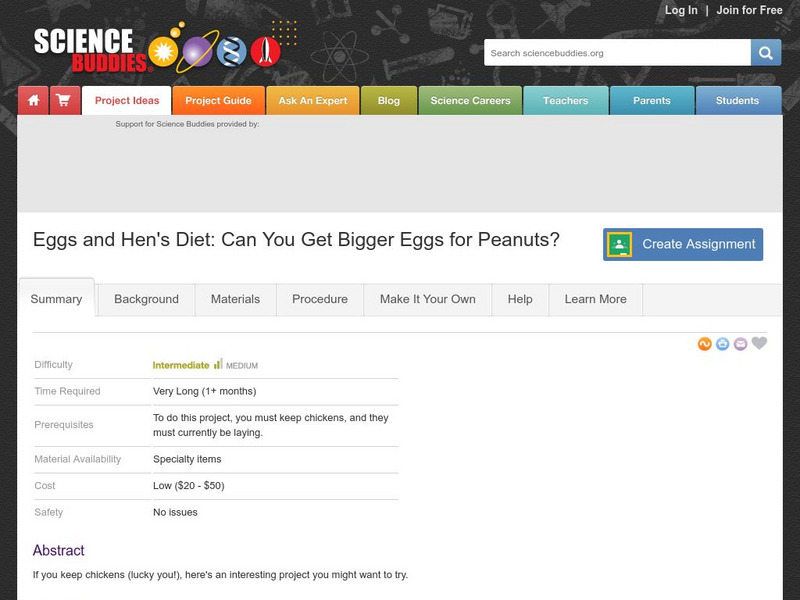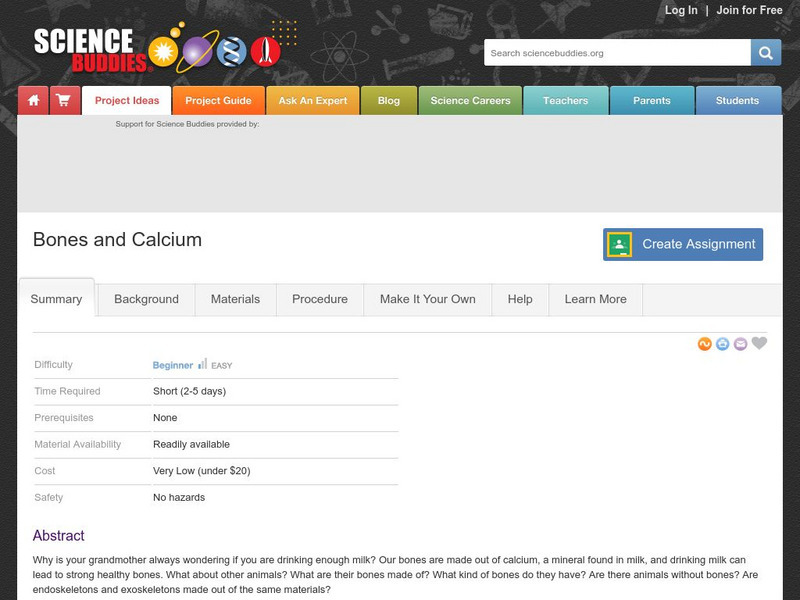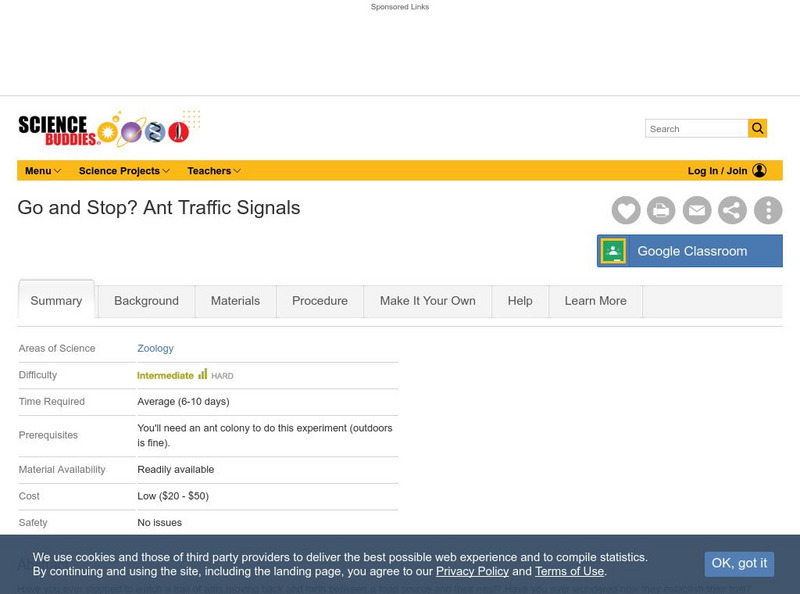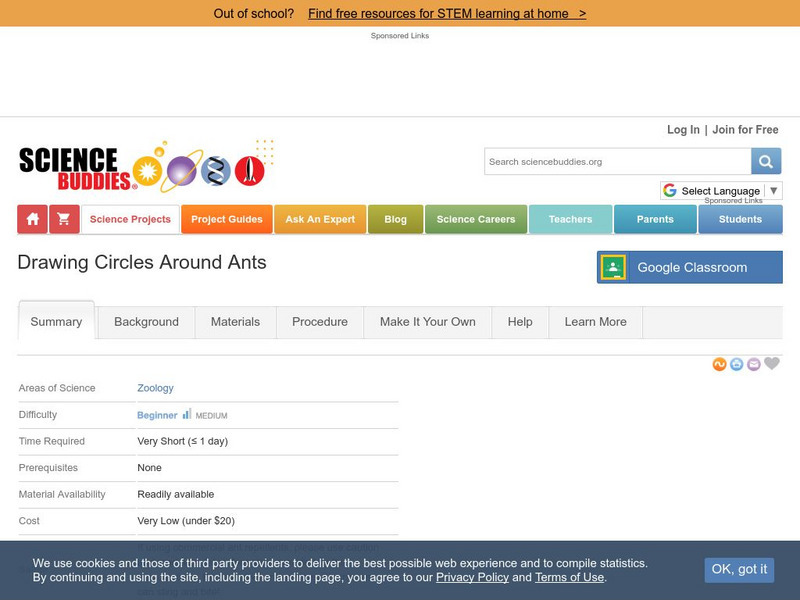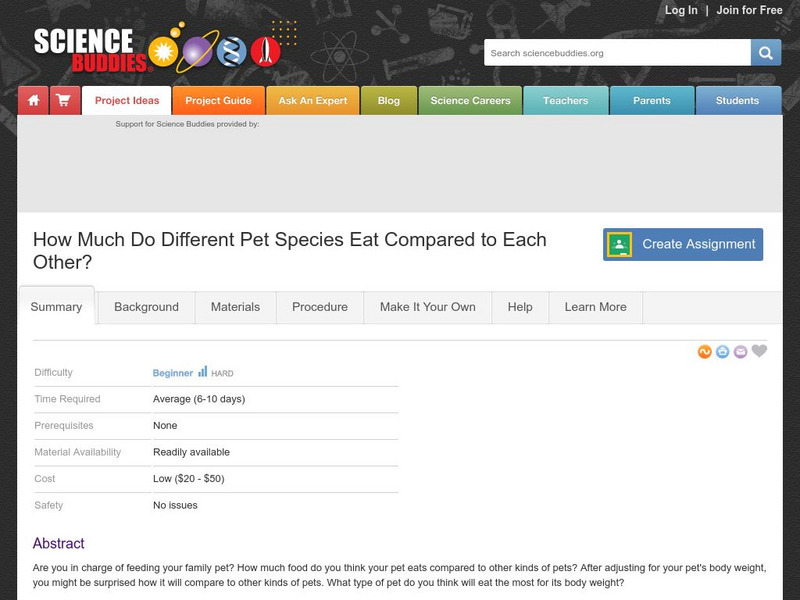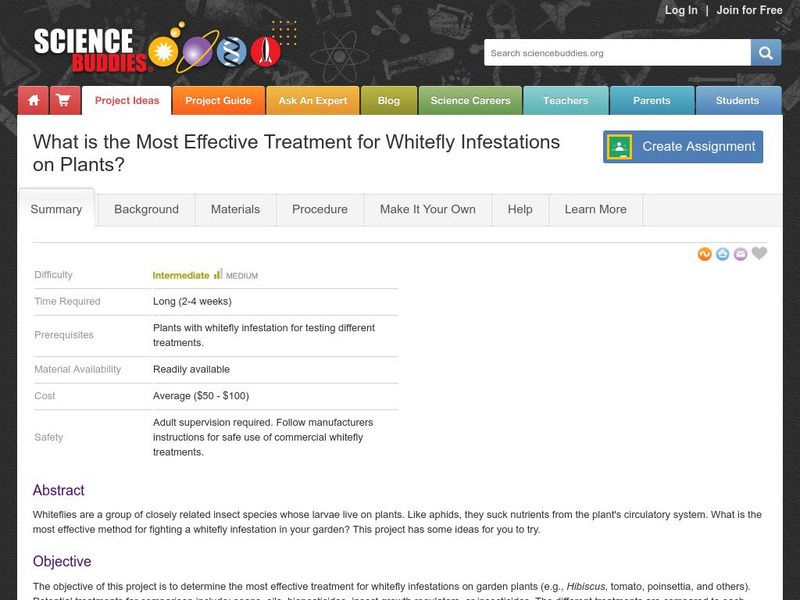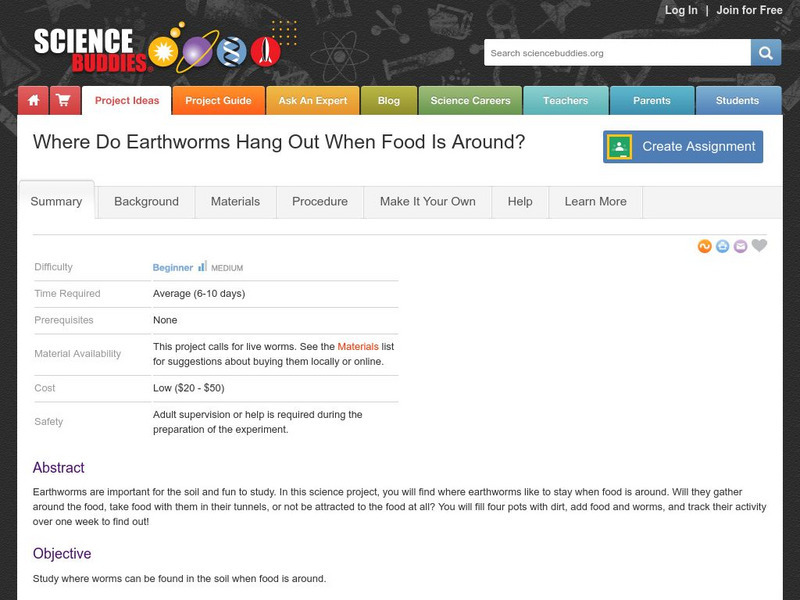Science Buddies
Science Buddies: Eggs and Hen's Diet: Can You Get Bigger Eggs for Peanuts?
The goal of this project is to determine whether feeding chickens a dietary supplement of peanuts will result in larger and heavier eggs. If peanuts do increase egg size, a secondary goal will be to determine the optimal amount of peanut...
Science Buddies
Science Buddies: How Much Worm Is a Worm?
Worms are slimy, wiggly, and gross. But did you know that they have many unique abilities? One of the neatest things that worms can do is regenerate, or re-grow, parts of their body. After a piece of a worm is cut off, it can grow back...
Science Buddies
Science Buddies: Bones and Calcium
Why is your grandmother always wondering if you are drinking enough milk? Our bones are made out of calcium, a mineral found in milk, and drinking milk can lead to strong healthy bones. What about other animals? What are their bones made...
Science Buddies
Science Buddies: What Is Home Sweet Home to a Bug?
If you had to choose between having your favorite dessert, going to a movie, or spending the night at a friend's house, which would you choose? This project shows you how you can "ask" a sowbug (or pill bug) a similar question in order...
Science Buddies
Science Buddies: Finding Phyla
Animals come in all shapes and sizes, each a small part of the amazing diversity of life. These differences can also help us to classify animals into different groups. Which group do you belong to? Do this experiment to investigate the...
Science Buddies
Science Buddies: Go and Stop? Ant Traffic Signals
Have you ever stopped to watch a trail of ants moving back and forth between a food source and their nest? Have you ever wondered how they establish their trail? You've probably read that ants use chemical signals to communicate with one...
Science Buddies
Science Buddies: Antlion Pits in Open Sand or Under Leaf Cover
Antlion larvae are known for their predatory ways. In sandy areas, they dig pits to trap ants or other crawling insects that happen to stumble in. This project shows you how to create a mini-environment for antlion larvae to test their...
Science Buddies
Science Buddies: Animal Magnetism: Do Magnets Affect Regeneration in Planaria?
The human body has an impressive ability to heal itself after injury, but humans have nothing on planaria. Planaria have an amazing ability to regenerate. An entire animal can regenerate from just a fraction of the body. This project...
Science Buddies
Science Buddies: Can Copper Foil Snails?
If you have a garden, you probably know about snails (or their shell-less relatives, slugs). You may even be looking for a good way to keep them from getting into your garden and eating up the results of all your hard work. Here's a...
Science Buddies
Science Buddies: Does Temperature Affect the Rate of Butterfly Development?
This is an interesting experiment for an Investigator who is 1) curious about insect metamorphosis and 2) patient. You'll need to set up different controlled environments for the chrysalides, and then check on them regularly as you wait...
Science Buddies
Science Buddies: Eeeeew! Maggot Mass Temperature
If you're looking for an experiment that will gross out just about everyone, you probably can't do much better than this. This project investigates an important question in the field of forensic entomology. Just make sure to get...
Science Buddies
Science Buddies: Where Do Lizards Go for Lunch?
You've probably heard about differences between the left brain and the right brain in people. One hypothesis has it that brain lateralization evolved as a survival mechanism in animals with eyes on the sides of their heads. One eye could...
Science Buddies
Science Buddies: Drawing Circles Around Ants
Do ants sometimes ruin your picnic? There are some chemical ant repellents you can spray to keep them away, but who wants to spray poison all over their food? In this experiment you can investigate some less toxic solutions that may be...
Science Buddies
Science Buddies: Testing Ant Repellents
Has your house ever suffered an ant invasion? This project is an interesting way to investigate what substances are effective as ant repellents. The goal is to find substances that keep ants away, yet are safe for humans and the...
Science Buddies
Science Buddies: Do Milkweed Bugs Show a Color Preference for Egg Laying Sites?
Milkweed bugs, as their name suggests, have a close relationship with the milkweed plant. The plant produces a milky sap, and toxic compounds, but somehow the milkweed bug is unaffected by them. Instead, it concentrates chemicals from...
Science Buddies
Science Buddies: What Seeds Do Birds Prefer to Eat?
In this project you'll build a bird feeding platform with four separate feeding areas. You'll be able to observe birds at close range, find out what birds inhabit your area, and learn about their seed-eating preferences. So get out your...
Science Buddies
Science Buddies: How Much Do Different Pet Species Eat?
How much food do you think your pet eats compared to other kinds of pets? In this experiment you will compare the food intake of your family pets to find out which pet eats more for its body weight.
Science Buddies
Science Buddies: What Are You Blubbering About?
Baby Beluga may swim in the deep blue sea, but the song doesn't mention how cold it is out there. Find out in this short project how a bit of blubber can be a useful adaptation when the water is ice cold.
Science Buddies
Science Buddies: Most Effective Treatment for Whitefly Infestations on Plants?
Whiteflies are a group of closely related insect species whose larvae live on plants. Like aphids, they suck nutrients from the plant's circulatory system. You will be asked to find the most effective method for fighting a whitefly...
Science Buddies
Science Buddies: Caffeine and Heart Rate: A Pharmacological Study Using Daphnia
In this project, water fleas (Daphnia magna), a semi-transparent freshwater crustacean, are used to study the effects of caffeine on heart rate. You do not have to learn how to take a crustacean's pulse though, because you can actually...
Science Buddies
Science Buddies: Earthworms: Nature's Tiller?
Everybody knows that worms are good for the soil, but not everybody knows why. This lab shows you how to efficiently measure earthworms within units of soil to determine their affect on decomposition and reduction of surface residue.
Science Buddies
Science Buddies: Ask a Cricket, 'What Is the Temperature?'
A cricket as a thermometer? Yes, that's right. In this science fair project, you'll investigate how the chirps of these tiny creatures can do more than lull you to sleep-they can tell you the temperature.
University of Oxford (UK)
The Oxford University Museum of Natural History
At the online home of this natural history museum, learn about zoology, geology and entomology. Explore online exhibits, along with educational materials for students and teachers.
Science Buddies
Science Buddies: M&m Survival Challenge
In the wild, there are two types of animals: the hunters and the hunted. A good predator is always on the prowl for fresh prey. What can an animal do to stay off of the menu? Find out how some animals use camouflage, and why sometimes it...
Other popular searches
- Zoology Lessons
- Zoology Project
- Zoology Experiments
- Basic Zoology
- Vertebrate Zoology
- Comparative Zoology
- Zoology Specializations
- Zoology Career Exploration
- Zoology Careers
- Zoology Habituation
- Zoology Adult Home Study
- Zoology Adult
